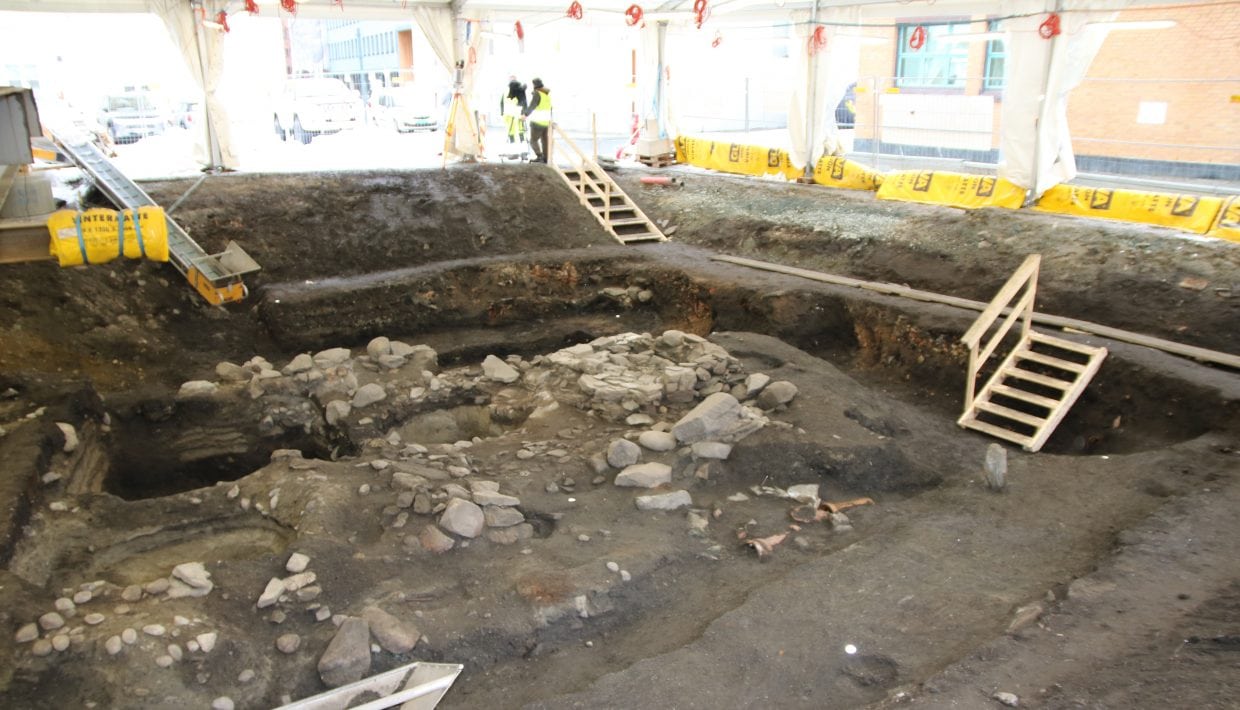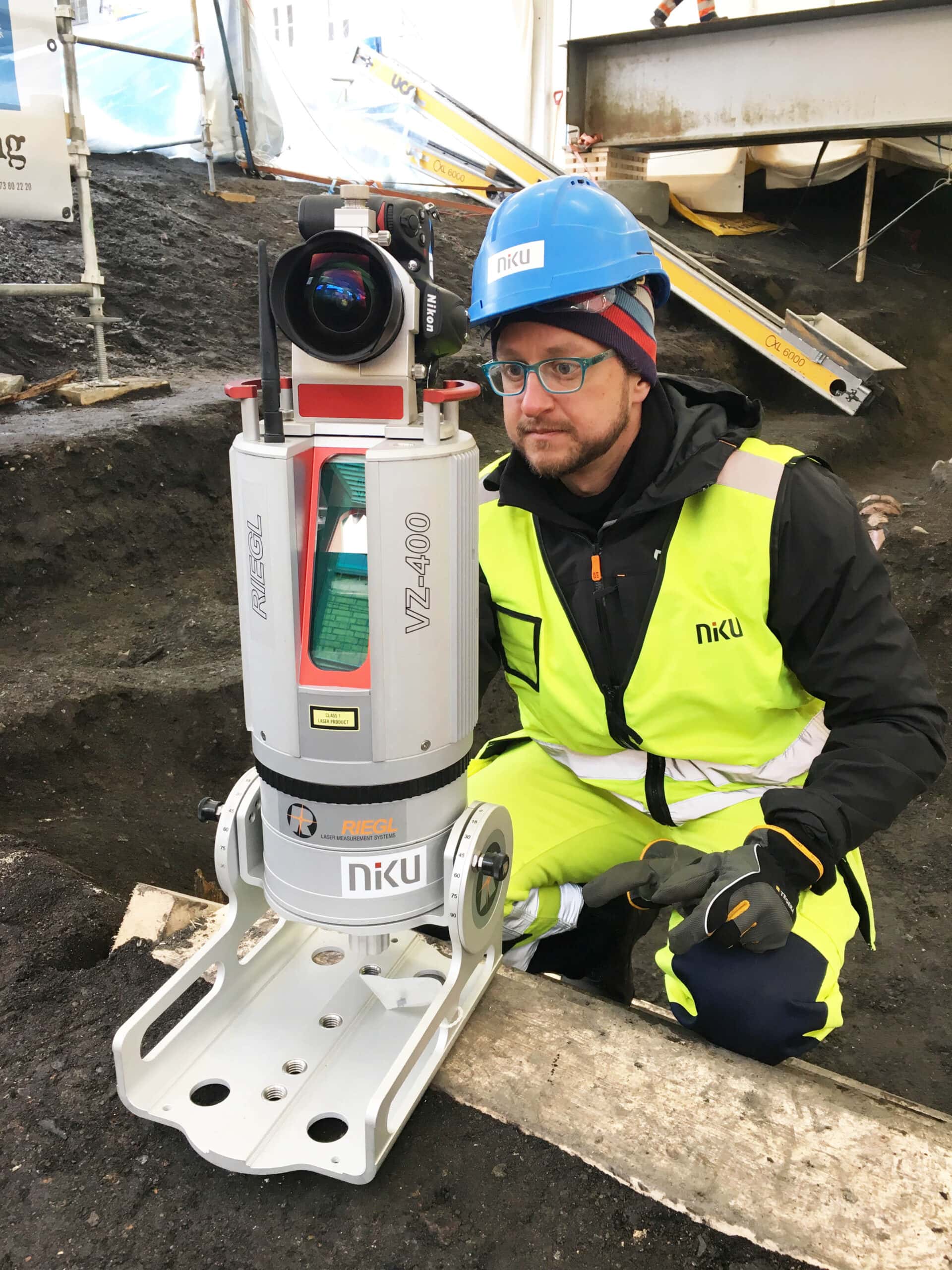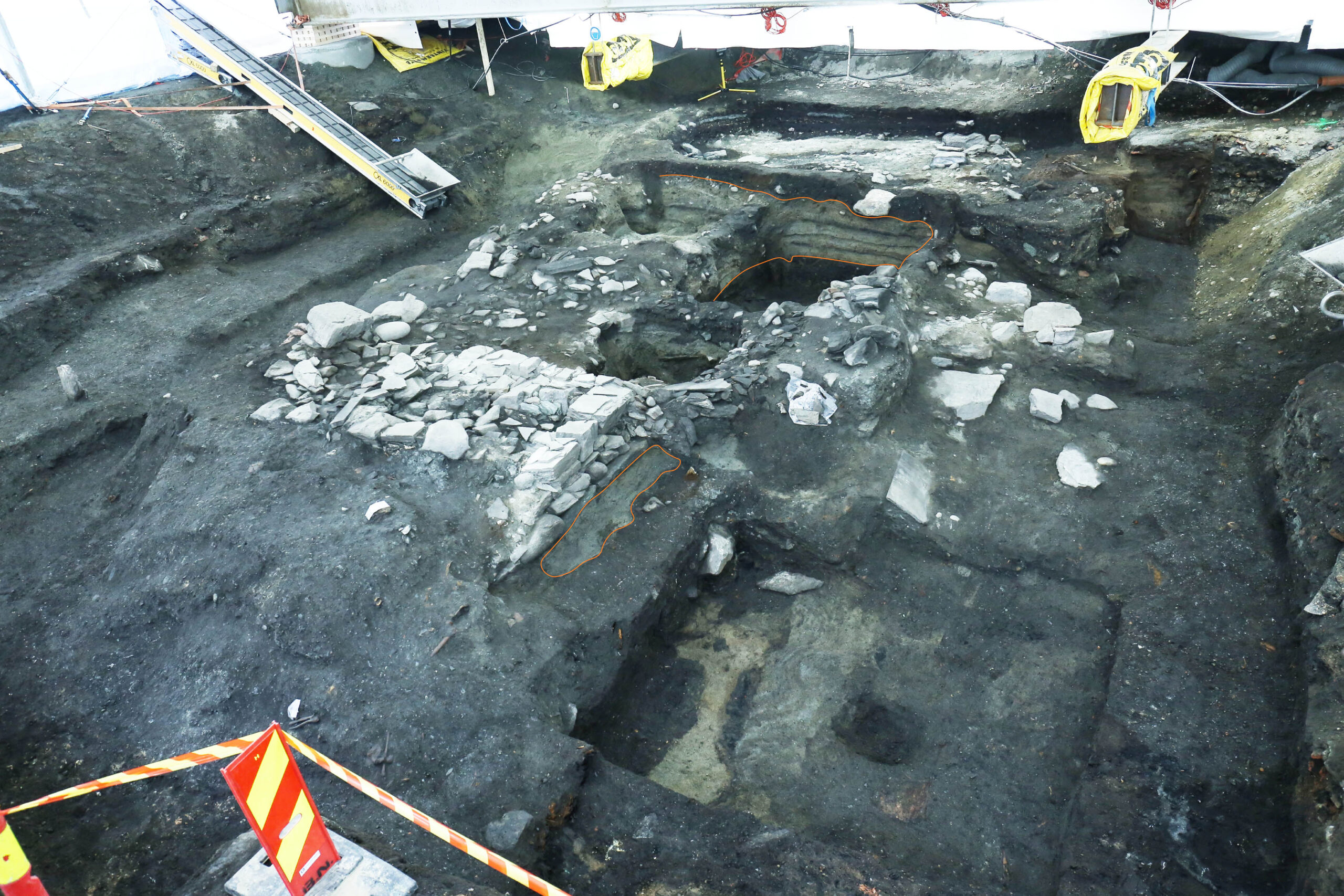
More archaeology in Trondheim
When archaeologists in the autumn of 2016 found what is probably the remains of the church of St. Clement, it was a small sensation. The finding was made in Søndre gate in Trondheim city center, and in February this year, the archaeological investigations continued.
This article is from 2017, and there has been done further analyses of the material since then. Read the report here (in Norwegian).
Archaeologists are now investigating a larger area than before. Although they start to get a good overview of the area, the excavation will surely offer some surprises in the time to come.
Archaeologists are particularly excited if they find the rest of the church choir of the church in a new area to the east.
Laser scanning and 3D documentation
Under the church remains lies even older archaeological material, layes which will be investigated further. The churchyard must be dismantled so that archaeologists can investigate the cultural layers below. Therefore, the entire area will be laser and photo scanned.
This is an advanced method of digital documentation used to ensure that the future reconstruction of the ruin becomes accurate. The scan also provides opportunities for 3D models and other virtual experiences in future exhibitions.
Mystical sand layer
Under the ruin lies the remains of a single older building with large buried poles. These will be excavated further. The same is true of a mysterious and thick sandy layer under the church. The sand layer will soon be analyzed by geologists from Norway’s Geological Survey (NGU). The archaeologists are currently working on a hypothesis that the sandy layer can be the result of a natural event and not man-made.
Hidden under the sandy the archaeologists have found metal pieces of archeological material dating to the Viking Age – before Olav Haraldsson. It is possibly that these finds may cause Trondheim’s city history to be rewritten.
Finnish by summer
The excavation will last until the summer and is carried out by the Norwegian Institute for Cultural Heritage Research (NIKU). The archaeological surveys will cost just over NOK 21 million and are financed by the Directorate for Cultural Heritage.



